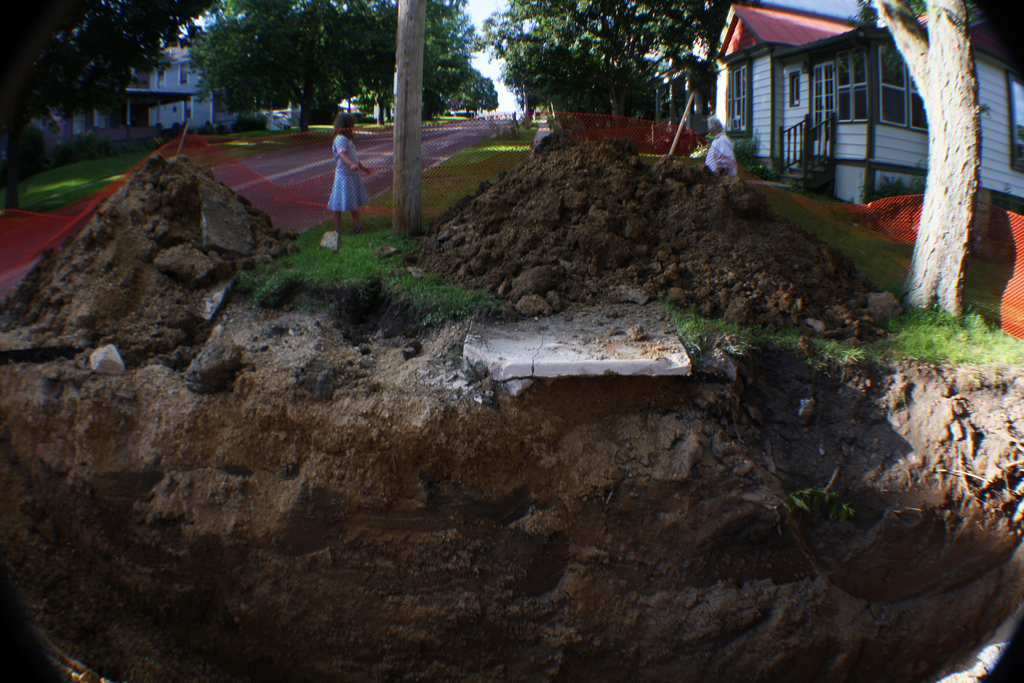 Construction is all too common in Wisconsin, especially for those who travel our state and federal highway systems. When your road rage heightens, remember you aren’t the only one affected by the construction. Trees can be damaged or killed by many different construction activities.
Construction is all too common in Wisconsin, especially for those who travel our state and federal highway systems. When your road rage heightens, remember you aren’t the only one affected by the construction. Trees can be damaged or killed by many different construction activities.
Some trees are injured by obvious reasons, such as broken branches or torn bark from machinery. These open wounds allow insects and diseases to enter the tree and cause future issues for the plant.
Even though you can’t see the damage, tree roots are also impacted by construction and can result in injured or even dead trees. About 90 percent of a tree’s roots are in the top three feet of soil and can extend outward more than twice the height of the tree.
Three ways roots can be impacted by construction include:
- Soil compaction is the number one way construction can damage trees. Trees thrive on loose soil that contains lots of pore space. Proper pore space facilitates the movement of water, nutrients and especially oxygen within the soil. With heavy machinery driving over the soil, it becomes compacted causing pore space to be reduced. This compaction reduces the oxygen within the soil and causes water to move less freely. The result of compaction is slow tree death from suffocation or drowning.
- Improper disposal of materials can also lead to tree damage. Chemicals from spills and construction debris can seep into the soil, killing roots.
- Grade changes and excavations of soil can also impact trees. Adding large amounts of soil or removing it can affect the health of trees. When adding large amounts of soil, the soil becomes compacted and reduces the ability for atmospheric oxygen to permeate down to the buried roots. Removing soil physically damages and/or disrupts the tree’s roots causing the decline and/or death of the tree.

Construction damage may not appear for up to seven or more years after the damage is done. The first signs of damage are stress related, usually wilted leaves and/or drooping branches. With major damage, large limbs begin to die back, (sometimes called stag-horning). In fact, when stag-horning occurs, our first suspicion is root loss or damage. Some trees show signs of distress by turning into its fall colors early in the season and by prematurely dropping their leaves. The tree’s annual twig and diameter growth may also begin to slow. If any of these symptoms occur, be sure to contact First Choice Tree Care to discuss your options.
With construction activity not slowing down anytime soon, it is best to be prepared. Be sure to follow these steps to create a successful landscape plan and ensure your trees remain healthy.
- Contact us at First Choice Tree Care to help develop a preservation plan.
- Mark the construction zone boundaries. By marking where the construction will be taking place, you will be able to determine which trees to monitor.
- Inventory your trees. Be sure to record where your trees are located and their size and health.
- Select the trees to be saved, and protect them. Fence off a generous area around each tree to protect it from compaction and direct equipment damage.
- Prominently mark those trees that are to be removed, if any.
- Provide specific entrance and exit routes for construction equipment. Use common routes for all equipment, mark and/or fence off the routes, and limit vehicles to these specified routes.
- Provide for a single utility access route (common trenches). If possible, work with the construction engineer on a common path to avoid any damage to the trees.
- Build penalties for damage to your trees into your construction contract.
- Prepare your trees for construction. Boost your trees health by regularly watering and fertilizing the soil. It is also best to layer wood chips at least six inches thick around the base of the tree and along travel routes. These wood chips will help prevent the soil from becoming too compacted.
- Regularly inspect trees during the construction process to assure that damage is minimized.

